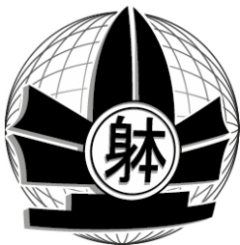Taido is a Japanese martial art presented to the public in 1965. It has its roots in Okinawan karate (te) and was created by Seiken Shukumine, who was originally from present Naha city. Taido aims at teaching how to succeed in society, including to cultivation of health, creativity and strategy. Or in other words, how to respond creatively to one’s challenges or situations, through physical and mental exercise.
Characteristics
The Taido techniques are based on dynamic body movements (as opposed to punches and kicks delivered from a static stance). These dynamic movements include tilting the body axis in order to avoiding incoming attacks while simultaneously generating energy for a counter attack. The footwork (Unsoku), besides being a way to adjust distance and angle to the opponent, is functionally connected to the techniques from a mechanical/movement point of view. In addition, gymnastic moves (Unshin) are used in order to complement the two dimensional footwork to enable movement in a three dimensional space.
Competition Forms
In Taido there are three forms for competing; Hokei (form), Jissen (fight) and Tenkai.
Hokei
There are different types of hokei that train different aspects of Taido. Each hokei build on the previous one while introducing some parts of the following, which gives the students a chance to review what they have learned while preparing them for the things to come.
Jissen

In Jissen the progress of making a decisive technique includes footwork, dynamic body movement, attack (punch, kick, elbow etc.), hit and retreat. These are interlinked with the process of critical thinking: analyze the situation, make a decision, choose a method, make a result and reflect in order to refine the next result.
Tenkai
 Tenkai literally means “development” and is a platform for creating new and challenging movements in a safe and creative environment.
Tenkai literally means “development” and is a platform for creating new and challenging movements in a safe and creative environment.
Hokei aims towards Jissen, which in turn aims towards Tenkai, which aims at the accuracy and precision found in Hokei. Thus, this cycle of events enables the players to develop abilities; accuracy and precision, confidence and applicable skills, challenging and creative thinking as well as split-vision, with the aim of improving the person itself.
Hokei and Jissen are both performed individually and in teams, while Tenkai is performed with one leading player fighting five opponents in a rehearsed scenario.
Besides these competition forms, Taido practice consists of basic training, application training and training that aims towards innovation and creation.
